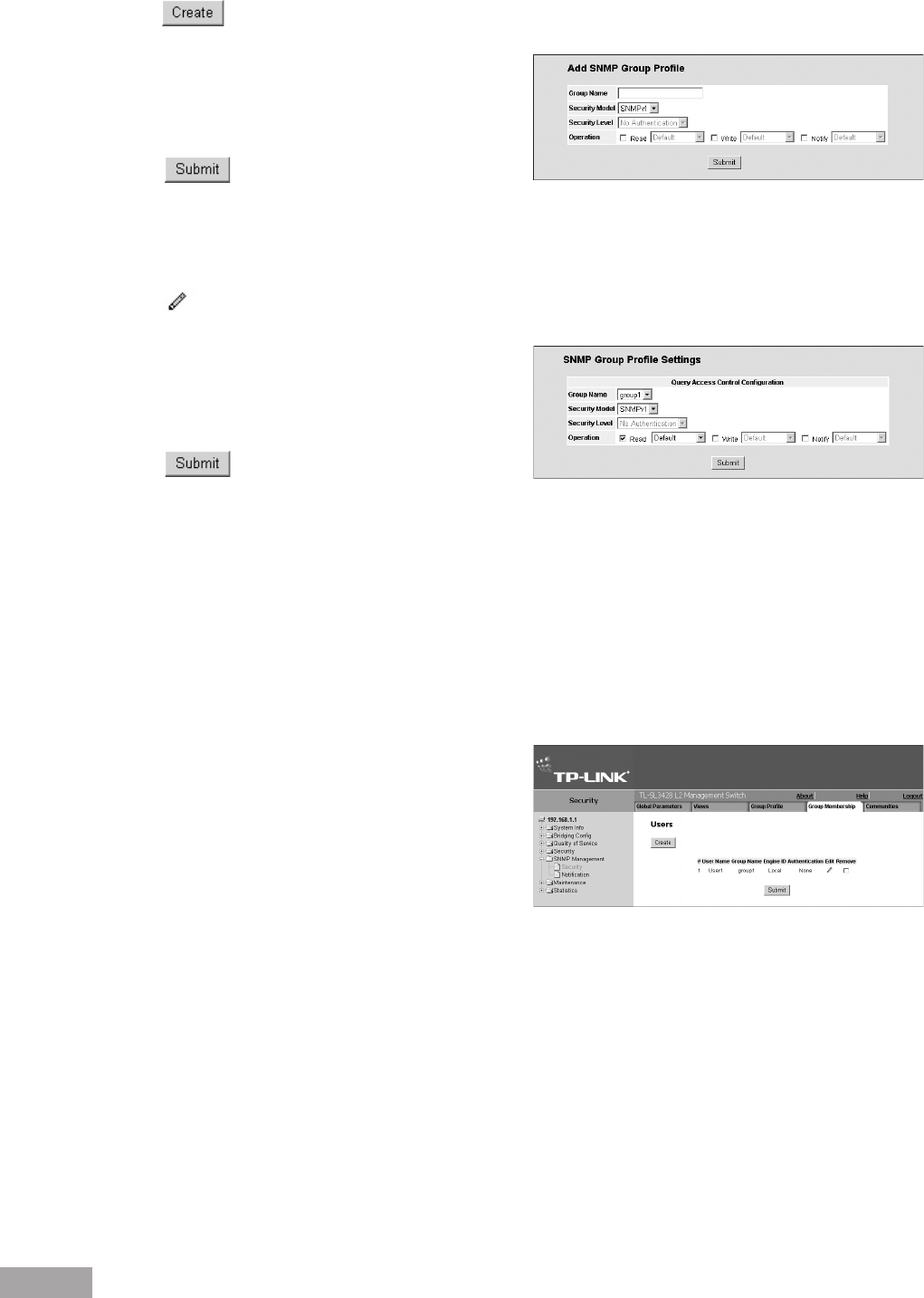
72
73
2. Click . The Add SNMP Group Prole Page opens:
Figure 104: Add SNMP Group Prole Page
3. Dene the Group Name, Security Model, Security Level,
and Operation elds.
4. Click . The SNMP group prole is added, and
the device is updated.
To modify the SNMP Group settings:
1. Click System > SNMP Management > Security > Group Prole. The SNMP Security Group Prole Page opens.
2. Click . The SNMP Group Prole Settings Page opens:
Figure 105: SNMP Group Prole Settings Page
3. Modify the Group Name, Security Model, Security
Level, and Operation elds.
4. Click
. The SNMP group profile is modified,
and the device is updated.
11.3.4 Dening SNMP Group Members
The SNMP Security Group Membership Page enables assigning system users to SNMP groups, as well as dening the user
authentication method.
To dene SNMP group membership:
1. Click System > SNMP Management > Security > Group Membership. The SNMP Security Group Membership Page
opens:
Figure 106: SNMP Security Group Membership Page
The SNMP Security Group Membership Page contains the
following elds:
User Name — Contains a list of user-defined user
names. The field range is up to 30 alphanumeric
characters.
Group Name — Contains a list of user-dened SNMP
groups. SNMP groups are dened in the SNMP Group Prole Page.
Engine ID — Displays either the local or remote SNMP entity to which the user is connected. Changing or removing the
local SNMP Engine ID deletes the SNMPv3 user database.
– Local — Indicates that the user is connected to a local SNMP entity.
– Remote — Indicates that the user is connected to a remote SNMP entity. If the Engine ID is dened, remote devices
receive inform messages.
Authentication — Displays the method used to authenticate users. The possible eld values are:
– MD5 Key — Users are authenticated using the HMAC-MD5 algorithm.
– SHA Key — Users are authenticated using the HMAC-SHA-96 authentication level.
– MD5 Password — The HMAC-MD5-96 password is used for authentication. The user should enter a password.


















